In honor of Veterans Day 2022, I thought it appropriate to share a story about a member of my family whom I never got to meet, because he died 20 years before I was born, paying the ultimate sacrifice during combat in World War II.
It’s a long tale that starts with a book fair in Chelmsford, but winds all the way back to a Lowell corduroy mill that’s been closed for more than half a century.
 The story is about my uncle, Gerald F. Cook, who died at the age of 19 in Germany on September 17, 1944. He survived the D Day invasion of Normandy, only to perish three months later, while serving as a radio man in the Army Infantry.
The story is about my uncle, Gerald F. Cook, who died at the age of 19 in Germany on September 17, 1944. He survived the D Day invasion of Normandy, only to perish three months later, while serving as a radio man in the Army Infantry.
Gerald was a hero to my father, James J. Cook, and his death spurred my father to try to fake his way into the Merchant Marines at the age of 15 so that he could go fight overseas. His true age was discovered, though, and he was discharged, only to return to serve in the Korean Conflict seven years later. My late brother, Gerald, was named after this uncle.
Sadly, however, we only had one picture of my Uncle Gerald, and a grainy one at that. Not much had survived the passage of time, especially in the days of World War II.
That is until Arthur Frechette, a since-retired Records Bureau clerk at the Lowell Police Department came across a book at a book fair being held at the Chelmsford Public Library. The book, covered in purple-blue corduroy, was entitled simply, Our Hockmeyer Veterans.
A few pages into the book, Frechette saw one of the first pages of the book and thought the individual in the first picture resembled me. Frechette was doubly surprised to see that the photo was of a man named Gerald Francis Cook. On a hunch, he bought the book, and delivered it to me, and I verified that the soldier in the clear picture was indeed, my Uncle Gerald.
The book, it turns out, was dedicated to three men from Lowell who were employees of a Lowell corduroy mill and who died in World War II – Gerald Francis Cook, John Calhoun Hunt, and Edward Peter Michael.
And in the pages that follow the stories of the three fallen soldiers are profiles of another 85 Lowell men who served in World War II and had worked for the Hockmeyer Corduroy company.
Come to find out, thanks to a bit of on-line research, the Hockmeyer Corduroy company was housed in the Waterhead Mills, which are still standing, and were also home to Ramalho’s West End Gym on Lawrence Street alongside the Concord River.
The book is entitled Our Hockmeyer Veterans, a commemorative record of the activities of the Hockmeyer Brothers’ organization during World War II. It was printed by the Murray Printing Company of Cambridge.
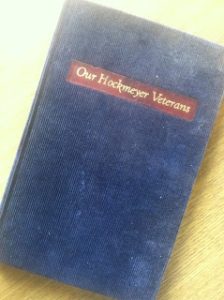 The book contains a preface written by Victor F. Hockmeyer, company president, Clive E. Hockmeyer, vice-president, and Lincoln Clark, treasurer. In the preface, the executives wrote “it is with mingled pride and sorrow that we present this memorial – pride in the record of achievement in a just cause by those of our organization who served in our armed forces and those who supplied the needs of those forces; sorrow that we must report the supreme sacrifice made in this service by three of our former employees who failed to return from the conflict.”
The book contains a preface written by Victor F. Hockmeyer, company president, Clive E. Hockmeyer, vice-president, and Lincoln Clark, treasurer. In the preface, the executives wrote “it is with mingled pride and sorrow that we present this memorial – pride in the record of achievement in a just cause by those of our organization who served in our armed forces and those who supplied the needs of those forces; sorrow that we must report the supreme sacrifice made in this service by three of our former employees who failed to return from the conflict.”
The preface continues: “Our organization was privileged to take an active part in this great effort and we are proud of our performance. Many of our employees entered the armed services and we believe it is fitting that the record of the Hockmeyer veterans should be published so that their roles in contributing to the ultimate victory will not soon be forgotten. May we strive for a just and lasting peace that their sacrifice shall not have been made in vain.”
In the introduction, the authors state “There is no need for the Hockmeyer organization to boast of our participation in the war effort. The facts speak for themselves. All our planning, all our work, all our machines were directed toward production for victory.”
“Millions of service men have enjoyed the clothing comfort given by the use of our products,” the executives continue. “Those who wore the jackets issued to forces in the Southern Pacific were using some of the jungle cloth that we produced in quantity exceeding over two hundred thousand yards. Navy men who warmed their hands by plunging them into corduroy-lined pockets were enjoying part of our special product of which our plant turned out more than one million yards for the Navy. Those unfortunate enough to be hospitalized luxuriated in maroon bathrobes for which we turned out over one-half million yards of corduroy for the Medical Corps.”
In all, the book offers profiles on 88 Lowell men who worked for the company and served in the military. Most, but not all of them have pictures to accompany their bios. Other bits of information included on their bio pages includes their job function at the mill, their branch of service, their ranks, assignments, and award, and for many a quote from them as well as some anecdotal information about their tour of duty.
Other names listed among the veterans include: Joseph A. Boisvert, Kenneth Buchanan, Arthur Burke, Henry J. Canas, Lawrence K. Carney, Antonio J. Ciaravolo, Warren J. Coleman, Frederick Courtemarche, Roland F. Cutter, Stephen DeMallie, Joseph E. Evicci, William P. Feehan, John C. Ferreira, Lionel G. Gaulin, Roland G. Gelineau, Gerard Gignac, Roger G. Girard, Francis J. Glynn, Thaddeus Gorski, Gilbert Grugan, George Hansen, James Healy, Langdon Hockmeyer, Vincent Hockmeyer, Robert Houde, George Hubert, William F. Ireson, Bronislaw Jaracz, Joseph W. Jezak, Herman Johnson, Stathis Kareores, William Kasilowski, Arthur J. Lachance, John Lake, Victor F. Lebeau, Leo Lemire, Carl J. Lowe, Harry G. Lowe, Philip Maguire Jr., Arman H. Marcouillier, Herache F. Markarian, Earl Marshall, Maurice Masson, Henry McGrath, William J. McNeill, David Muldoon, Francis Muldoon, Frank P. O’Brien Jr., Joseph O’Donnell, Julian J. Olejarz, William Oliveria, Raymond Ouellette, Edward Paglieroni, George Paleologos, Peter Panagiotareas, Alfred Pearson, Joseph Pearson Jr., Theodore J. Fereira, William Pestana, Gerald Proulx, Mortimer Pulsifer, Daniel E. Rallis, Paul N. Robarge, Everett W. Rolfe, Michael Rutina, John P. Ryan, Joseph Sasnauskas, Charles Shacka, Joseph A. Soulard, Alexander J. Stanulonis, Leopold E. Stec, C. Roger Stott, Raymond Stowell, Fred Swiderski, Walter S. Urbowicz, Joseph Versiackas, Walter Viera, George C. Walter, Joseph Whitworth, Paul E. Wilmot, Henry S. Wojkowski, G. Kenneth Wright, George Xiggores, Joseph Yates, and Paul Zannoni.
Anyone who thinks they might be related to somebody on that list can leave a post in the comments section below and we’ll share an image with the bio information listed in the book.
Some final facts I learned about my uncle via this book: he worked in the “finishing” section of Hockmeyer. He was in the Army Infantry, 26th Infantry Division, Company C, with a rank of corporal. He enlisted on May 20, 1943, and was killed in action sixteen months later, on September 17, 1944. He was awarded ribbons for European Theater of Operations, Good Conduct. He received a Purple Heart, and the Combat Infantryman’s Badge. He trained at Fort McClellan, Alabama.
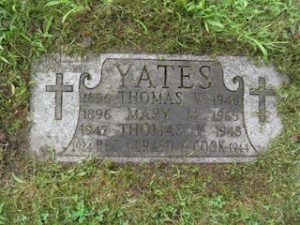 According to his bio in the book: “Gerald trained at Fort McClellan for five months, then was shipped overseas and landed in England in November, 1943. There he underwent further training. He took active part in D Day invasion of Normandy on June 6, 1944. He was in active combat against the enemy in the push across France and into Germany. On September 17, 1944, Gerald was killed in action in Germany. Gerald was the captain’s radio man.”
According to his bio in the book: “Gerald trained at Fort McClellan for five months, then was shipped overseas and landed in England in November, 1943. There he underwent further training. He took active part in D Day invasion of Normandy on June 6, 1944. He was in active combat against the enemy in the push across France and into Germany. On September 17, 1944, Gerald was killed in action in Germany. Gerald was the captain’s radio man.”
I wish more information about my uncle’s history existed, especially photos or any other stories of his young life. Gerald had been raised on Auburn Street in the Flats neighborhood. Before he left to serve his country, he married Theresa Yates of B Street in the Highlands, with whom he is buried. He also left behind four siblings, all of whom have also since passed away. A Lowell Sun newspaper account of Gerald’s death at the time described him as “a well and favorably known young Lowell man.” More than twenty years ago, the square at the intersection of D and School Streets in the Highlands was dedicated to my uncle.
If nothing else, this Veterans Day, I hope this helps commemorate the life of a young man whose story was almost lost to time.
This Veterans Day, for Gerald F. Cook, as well as all of the other veterans profiled in this book, a grateful country – and in this particular case, a grateful nephew – thanks you.



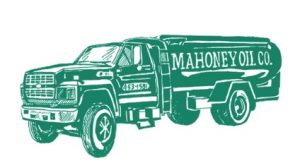

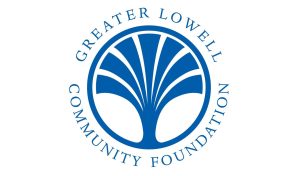





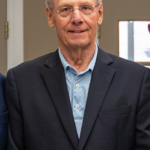



8 responses to “Honoring Our Veterans – In Search of the Hockmeyer Veterans”
Hi Pat, My Grandfather is David Muldoon, and his brother Francis my great uncle. Thank you for your story about your uncle, we must never forget.
Jeanne Durkin
Jeanne – share your email and I’ll send you a pic and the story of your grandfather and uncle!
Hi Pat,
My Grandfather is Roland Gelineau and he is on your list. I also had an uncle Leo Gelineau that was killed in WWII whose body was never recovered. He was a POW in the death march of Bataan and we just received a bunch of information from the Army about what happened to him. I would love any information you have on my grandfather and if you would like to add any information on my uncle please let me know.
Thanks so much,
Leighann
Hi Pat,
My paternal grandfather was William Ireson. I believe his photo is in this book as well, but if there is any additional information on him available I would love to know more. Thank you for sharing this story.
With gratitude,
Katie
Leighann, apologies, I just saw your comment today. Let me know your email address and I’ll scan and get you the information you need.
Katie, let me know your email address and I’ll scan and send you the page and info. Thanks for checking in!
Contributor
Craig Hockmeyer Vinnie’s youngest son
Hock4
Changes
Sources
In Kent D. Miller’s book “The 356th Fighter Group”, Vincent Hockmeyer is listed as Captain. Flew 99 missions, in 2 tours.
His first mission was with the very first mission of the 356th on Oct. 15 1943
Final mission on January 7 1945
His P-47 was named “Raggedy Ann”
He also flew a P-51 named “Raggedy Ann 3”
Hi! I’m a Hockmeyer descendant of the family who owned the mill and published the book. I don’t know anything about your relative but thank you for their service!